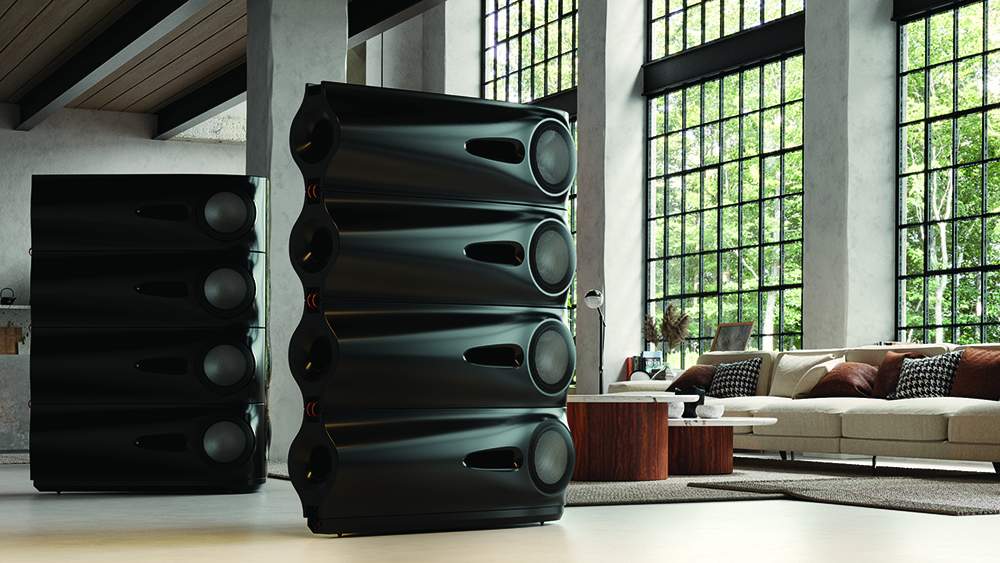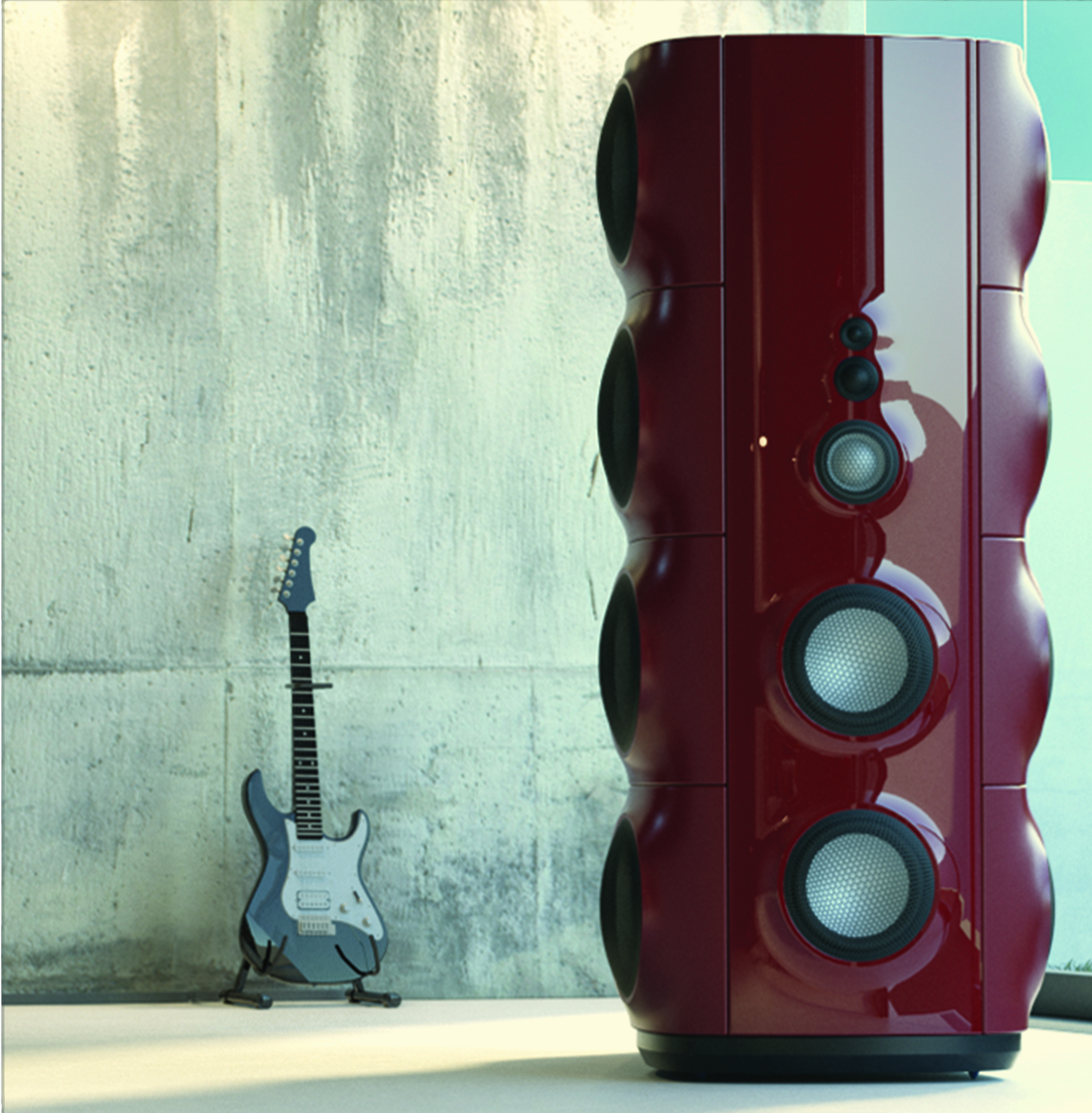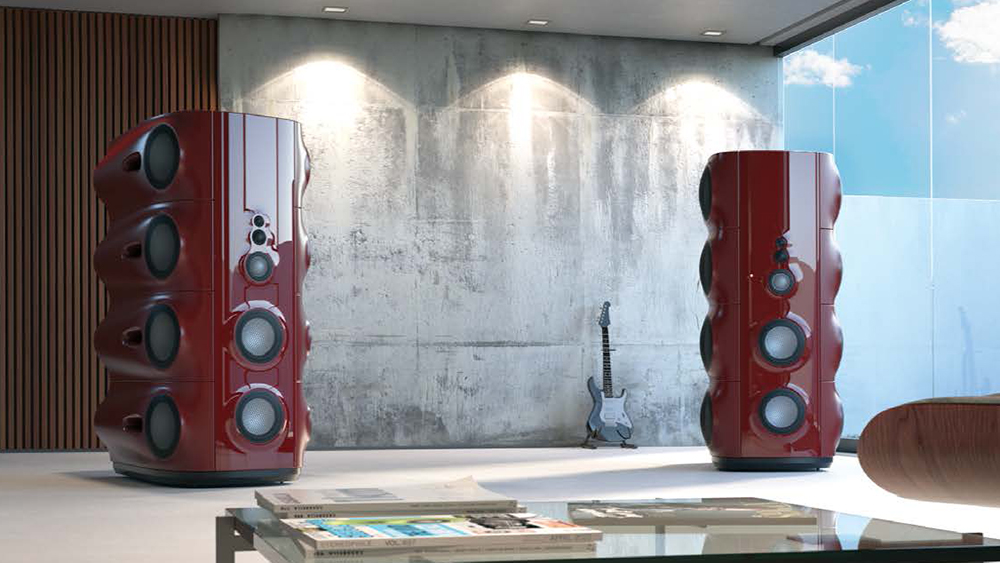Vivid Audio’s majestic, 13-driver Moya 1 speakers promise "thrills at every octave"
Immense bass modules lie at the heart of the ambitious design

If the height of your pandemic achievements – your honed banana brand recipe or hula-hoop PR, perhaps – was put into perspective by Taylor Swift writing and releasing two albums or American comedian Bo Burnham’s award-winning, one-man musical, get a load of this: when Laurence Dickie, the speaker engineer behind the iconic Bowers & Wilkins Nautilus and now the technical director of the Vivid Audio brand he founded, was quarantined in a hotel room during the pandemic, he designed his dream loudspeakers: a five-way, 13-driver design that is now launching as Vivid Audio’s new flagships, the Moya 1.
Look at the accompanying images and it’s hard not to stare at those side-firing, proprietary bass drivers, of which there are eight, each one capable of handling 800W and together horizontally opposed on either side of the towers. Vivid Audio found that extending the speakers’ bass response also improved the perception of higher frequency bands, and so these bass units became even more pivotal to the design.

Each has a 22.5cm alloy diaphragm, with their magnets united by a substantial steel tie-bar to eliminate cabinet vibration and turbulence, negating the need for a heavier enclosure. Two drivers sit in each of the four braced bass enclosures and are complemented by reaction-cancelling modes with aerodynamically optimised bass ports.
Turn your attention to the front baffle and you’ll spy two front-firing 17.5cm carbon fibre-reinforced mid/bass drivers, above which is a single 100mm carbon fibre-reinforced mid-range driver and two higher-frequency, ‘Diamond-Like Coated’ (DLC) aluminium alloy modules – a 50mm upper midrange dome and a 26mm tweeter. The former benefits from tapered tube loading, which is a way of preventing sound waves at the back of the drivers from distorting the audio, and was a concept the Naitulus famously introduced before Dickie went on to implement it in every Vivid Audio speaker.
Of those higher-frequency units, Vivid Audio says that the contrasting properties between the DLC and the aluminium substrate "heightens shear losses and dampens the ‘Q’ of the break-up", going a long way to helping the Moya M1 deliver “audio thrills at every octave”.
Every driver has been developed (and optimised) from the South African-based brand's existing signature carbon-reinforced sandwich composite, and is hand-manufactured in-house, too. Also built in-house are the computer-optimised, passive, hard-wired filters which promise remarkable accuracy and phase matching.

Last but not least, the Moya M1 use a passive, five-way, fourth-order Linkwitz-Riley crossover in three parts, with the mid and upper sections placed well away from the bass ones.
Get the What Hi-Fi? Newsletter
The latest hi-fi, home cinema and tech news, reviews, buying advice and deals, direct to your inbox.
If your subconscious hasn’t been mulling on an asking price while you’ve been reading this, it will have at least screamed ‘expensive’! Indeed, the Vivid Audio Moya M1 – launching this year, which marks Dickie’s 50th anniversary in speaker design – have an anticipated retail price of £400,000 / AU$750,000. Oh Moya days!
MORE:
Read our Australian sister publication's Vivid Audio Kaya S12 review
Amazon Spring Deal Days sale promises big discounts on speakers, headphones and more
The best speakers, all reviewed by our expert team
Becky is the managing editor of What Hi-Fi? and, since her recent move to Melbourne, also the editor of the brand's sister magazines Down Under – Australian Hi-Fi and Audio Esoterica. During her 11+ years in the hi-fi industry, she has reviewed all manner of audio gear, from budget amplifiers to high-end speakers, and particularly specialises in headphones and head-fi devices. In her spare time, Becky can often be found running, watching Liverpool FC and horror movies, and hunting for gluten-free cake.
-
JR75 Well - this is now my pick for the ugliest speakers ever made. It was the Monitor Audio Hyphn speakers, but these are even uglier if that is possible. And for over $500,000 USD! I don't care how rich you are, you'd have to be a complete nutjob to buy these.Reply -
Ian Smedley ReplyWhat Hi-Fi? said:The Moya M1 – launching this year, which marks Dickie’s 50th anniversary in speaker design – have an anticipated retail price of £400,000 / AU$750,000.
Vivid Audio’s majestic, 13-driver Moya 1 speakers promise "thrills at every octave : Read more
I disagree.JR75 said:Well - this is now my pick for the ugliest speakers ever made. It was the Monitor Audio Hyphn speakers, but these are even uglier if that is possible. And for over $500,000 USD! I don't care how rich you are, you'd have to be a complete nutjob to buy these.

